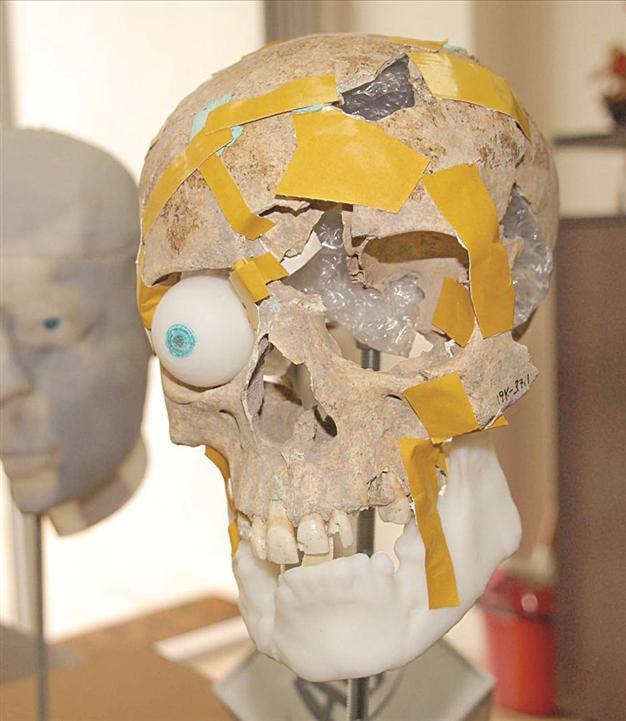3D technology gives face to a centuries-old female skull
DENİZLİ - Anadolu Agency

The scattered pieces of a centuries-old female skull have been reassembled and a new face has been formed for it thanks to 3D technology. DHA photos
The scattered pieces of a centuries-old female skull have been reassembled and a new face has been formed for it thanks to 3D technology.
A scattered female skull, which was found during excavations in the Aktopraklık tumulus in the northwestern province of Bursa’s Akçalar district and determined to have been killed with torture, has been reassembled and its face has been constructed with 3D technology.
Excavations have been carried out in the 8,500-year-old tumulus under the leadership of Istanbul University Prehistory Department member Associate Professor Necmi Karul. The works shed light on the history of Anatolia as well as Bursa. Male, female and child skeletons were found in the area three years ago and they were determined to have been killed with torture after being hogtied.
The scattered skulls of the skeletons were sent to the western province of Denizli three months ago and works were started as part of a project of Associate Professor Bora Boz of Pamukkale University (PAU) to give a new face to the skeletons. PAU member anatomy expert Associate Professor Mehmet Bülent Özdemir assembled the scattered skull pieces and determined the parameters to form a new face. Engineer Ali Boz, who carried out research-development work in the PAU Techno City, used 3D technology to make a new face.
Wide jawbone“Using the data of the Anatolian people’s face, we created the face on the bones. We can do it without damaging the materials. Historians say that the 8,000 year-old skeletons belong to the ancestors of those who immigrated to Europe. We can say that the woman, for whom we have constructed a new face, is one of the ancestors of Europeans,” Ali Boz said.
Bora Boz added that the jawbone of the woman was wide, which was not normal.
“Her jawbone was pretty wide for women’s standards. The head of the excavations told us that these people worked as basket makers, and their jaw was strong because they used their mouths while doing this. The three skeletons that we brought to Denizli were hogtied and tortured. Maybe these people were sacrificed. As well as anthropological works, DNA research also continues in the excavation area. We will continue working here. When they are finished, the faces will be displayed at the local archeopark,” he said.
